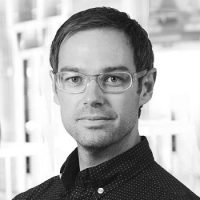Open SESAME?
1 Jun 2017 by Evoluted New Media

Last month, a remarkable event took place. Scientists and engineers joined together for the official opening of a synchrotron facility known as SESAME.
Last month, a remarkable event took place. Scientists and engineers joined together for the official opening of a synchrotron facility known as SESAME.
Nothing hugely significant you might say – it is, after all, one of around 50 such facilities across the globe built to be a source of x-ray light for research of many different kinds. Yet in the construction, and now the operation, of SESAME (Synchrotron-light for Experimental Science and Applications in the Middle East) we see one of the most staggering examples of scientific diplomacy I can imagine.
When the project started in 1997 it brought together several nations that would be founder members of the project. They would fund it, plan the construction, host talks about its development, and jointly benefit from the research undertaken there. All this tends to be standard practice for big scientific infrastructure projects like this; but when those member states consist of several Arab nations, together with Turkey, Pakistan, Cyprus, Iran and – astonishingly – Israel, then it is anything but standard practice.
For the past 20 years, the partnership has endured. Through numerous geopolitical crises, military actions and diplomatic incidents, it is science – and science alone – that has held firm over all other forms of international relations. Ancient, deep-rooted and complex grievances have been put aside, all in the pursuit of knowledge. I can’t think of a better example of the idea that the quest for scientific truth can be an intensely humanising one. It brings out the best in us. How else could it have tamed one of the most diplomatically tense regions on the planet?
But not content with lighting up the Middle East, the man largely responsible for SESAME now has his sights set on Africa. Professor Herman Winick has plans to bring together key scientists and officials from several African nations. The Physicist from Stanford University said that no part of the world should be denied such a “stupendous tool” for studying all kinds of materials. But I rather suspect he is all too aware that, if successful, a synchrotron in Africa will mean more than that.
A prominent member of the project’s steering committee has suggested that it would be the single most important scientific instrument for revolutionising science, technology and innovation in Africa.
Of course, there is a long road ahead, but given his past form, would anyone bet against a synchrotron in Africa this time in 10 years? Certainly not me. So, here’s to you Professor Winick; for not only spearheading projects invaluable to science, but for also allowing the human race to shine despite being caught in the mire of geopolitical self-interest.
 Phil Prime, Editor
Phil Prime, Editor

